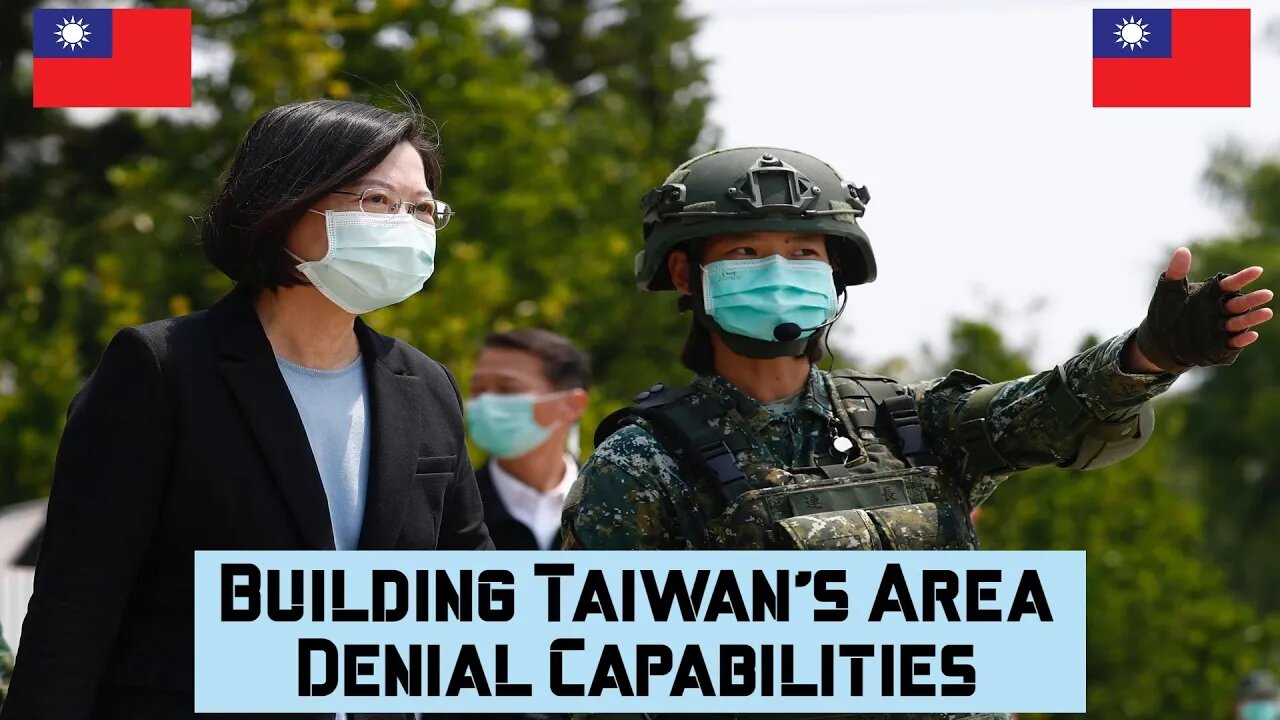Premium Only Content

Building Taiwan Area Denial Capabilities #taiwan #chinamilitary #taiwanese #usmilitary
Today we are examining how Taiwan can build its own Area Denial Capabilities. The launch of China’s third aircraft carrier in June marked a new phase of military pressure on Taiwan. Chinese carrier strike groups, with full operational capability, strengthen Beijing’s blue-water power projection capabilities both to directly attack Taiwan and to prevent other countries from coming to the island’s aid. While some assert that Taiwan cannot counter a Chinese invasion on its own, the results of my analytical wargames show the opposite. The drills by the Chinese People’s Liberation Army (PLA) last month likely demonstrated Beijing’s intentions to impose a naval blockade on the island in the event of a military confrontation. Taiwan’s military needs to prevent Chinese fleets from moving into their tactical positions or, if unable to prevent the blockade’s establishment, to disrupt ongoing PLA Navy (PLAN) operations. While Chinese expansion of the PLAN and its capabilities do put Taiwan at risk, Chinese carrier strike groups are not without their vulnerabilities. Attacks on supply and support to the Chinese carrier strike group can damage the PLAN’s operational effectiveness. Specifically, the Type 901 Hulunhu-class fast combat support ship, of which the PLAN has two, is prime for targeting. China’s conventional-powered carriers, despite the fast-growing combat fleets, are still quite limited in their range and endurance, requiring support and logistics ships. Sinking these support ships would disrupt a Chinese blockade or amphibious invasion. To achieve the aforementioned goal, Taiwan must develop its own anti-access/area denial (A2/AD) strategy, which incorporates guided weapons and reconnaissance systems. Currently, Taiwan’s military possesses two possible options for guided anti-ship weapons: the ground-launched Hsiung Feng II/III and the ground- or air-launched AGM-84 Harpoon. With the reconnaissance information gathered by naval surveillance radars and MQ-9B SeaGuardian unmanned aerial vehicles, these legacy anti-ship missiles remain potent defenders of the island. However, as the PLAN is rapidly growing, Taiwan needs more than short- and medium-range options to cope with the PLA threat. While these legacy systems are effective, they have capability gaps that reduce the effectiveness of Taiwan’s A2/AD plans. One option to close those gaps is the stealthy AGM-158C long-range anti-ship missile (LRASM). The AGM-158C is capable of conducting autonomous targeting and precision strike at standoff distances. Employing the AGM-158C to sink combat support ships, the Achilles’ heel of Chinese carrier strike groups, would inflict catastrophic damage on Chinese invasion plans and force the PLAN to station its fleets farther away from the island.
====================================
We appreciate all of our viewers and supporters. Thank you.
====================================
Support us on Patreon: https://www.patreon.com/shieldwalldefense
====================================
Fair use is the right to use a copyrighted work under certain conditions without permission of the copyright owner. The doctrine helps prevent a rigid application of copyright law that would stifle the very creativity the law is designed to foster. It allows one to use and build upon prior works in a manner that does not unfairly deprive prior copyright owners of the right to control and benefit from their works. Together with other features of copyright law like the idea/expression dichotomy discussed above, fair use reconciles the copyright statute with the First Amendment.
====================================
-
 LIVE
LIVE
The Quartering
2 hours agoDr Disrespect Leaves Youtube For Rumble! With Rumble CEO Chris Pavlovski
6,104 watching -
 DVR
DVR
Side Scrollers Podcast
4 hours agoDoc Disrespect ON RUMBLE, PlayStation To Rival Nintendo | Side Scrollers
2.39K1 -
 49:43
49:43
Ben Shapiro
1 hour agoEp. 2092 - Trump Makes His FINAL PICKS
7.62K3 -
 1:06:49
1:06:49
Russell Brand
3 hours agoIs Elon Musk Taking Over MSNBC?! + Trump's Executive Order Plan – SF500
85.6K139 -
 1:57:39
1:57:39
The Charlie Kirk Show
2 hours agoThe Fake Tulsi Smear + Is Canada a Free Country? (No) + Why Trump Is Winning | Mullin | 11.25.24
49.6K19 -
 27:42
27:42
Stephen Gardner
2 hours ago🔥Blackmail Scheme ROCKS Trump's RFK Pick!
6.32K29 -
 59:57
59:57
The Dan Bongino Show
6 hours agoGeraldo Wants To Fight Me Again? (Ep. 2377) - 11/25/2024
657K2.3K -
 1:06:06
1:06:06
The Rubin Report
3 hours agoBill Maher Makes Neil deGrasse Tyson Go Silent with His Proof of Failing Science
57.7K65 -
 1:15:38
1:15:38
Geeks + Gamers
3 hours agoDisney Still HIDING Snow White Trailer After Rachel Zegler BACKLASH, Wicked And Gladiator Box Office
35.2K5 -
 1:57:01
1:57:01
Steven Crowder
5 hours agoWill The Left Use The Ukraine War to Sabotage Trump's Presidency?
334K202